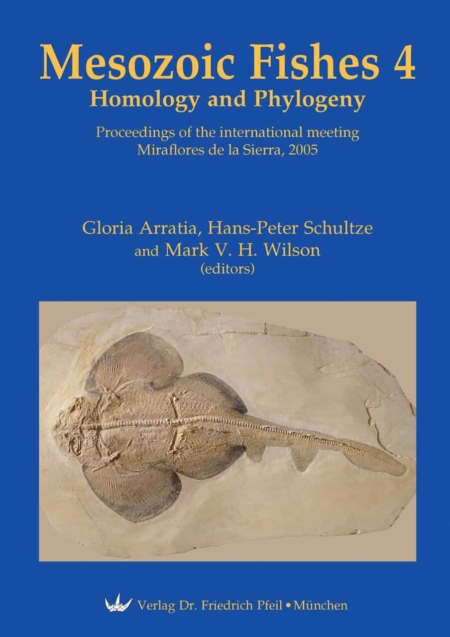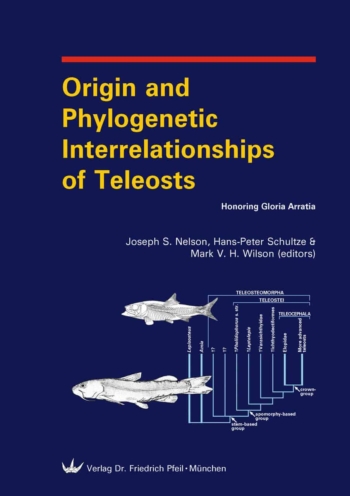The Mesozoic was an important time in the evolution of chondrichthyan and actinopterygian fishes because it was then that most of the modern groups first entered the fossil record and began to radiate. By the end of the era, many archaic forms had disappeared and the foundation had been laid for the modern diversity of fishes. Despite this significant evolutionary change, before 1990 there had been little concerted research done on Mesozoic fishes and no synopsis or compilation of the systematics and paleoecology of Mesozoic fishes had been published, not even for single groups. To remedy this deficiency, Gloria ARRATIA organized the first symposium, “Mesozoic Fishes – Systematics and Paleoecology” in Eichstätt, Germany, from August 9 to 12, 1993 and, with G. VIOHL, edited the first volume in the Mesozoic Fishes series. Published in 1996, it included 36 papers about elasmobranchs, actinopterygians, sarcopterygians, and the paleoecology of certain important fossil localities. Gloria ARRATIA and Hans-Peter SCHULTZE organized the second symposium in Buckow, Germany, from July 6 to 10, 1997, and edited the resulting volume “Mesozoic Fishes 2 – Systematics and Fossil Record”, which included 31 papers. Andrea TINTORI, Markus FELBER, and Heinz FURRER organized the third Symposium in Serpiano, Monte San Giorgio, Switzerland, from August 26 to 31, 2001. The results of that symposium included 33 papers, edited by G. ARRATIA and A. TINTORI and published in “Mesozoic Fishes 3 – Systematics, Paleoenvironments and Biodiversity”.
Francisco José POYATO-ARIZA and Angela BUSCALIONI organized the fourth and most recent Symposium on “Mesozoic Fishes – Systematics, Homology and Nomenclature” in Miraflores de la Sierra, Madrid, Spain from August 8 to 14, 2005. The results of that meeting, as presented here in 24 research papers, reflect the current state of knowledge about Mesozoic fishes. This volume emphasizes the two major groups of fishes, actinopterygians (mainly represented by teleosts) and chondrichthyans, that lived during the Triassic, Jurassic, and Cretaceous periods, and includes studies on related fishes up to the present, as well as papers dealing with homology problems in fishes. New discoveries are presented about fishes from Africa, Antarctica, Asia, Europe, North America, and South America. As illustrated by this volume, there has been recently a flowering of studies on Cretaceous teleosts, in contrast to the more limited number of studies on chondrichthyans. The new discoveries and the critical evaluation of previous research presented here are an exciting invitation to further research on Mesozoic fishes.






Reviews
There are no reviews yet.